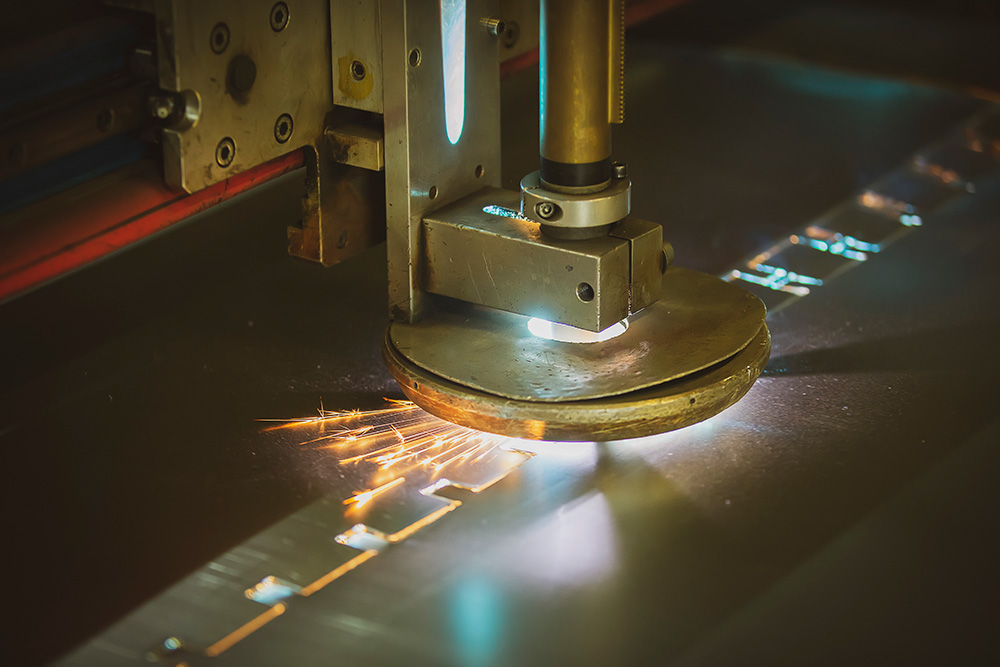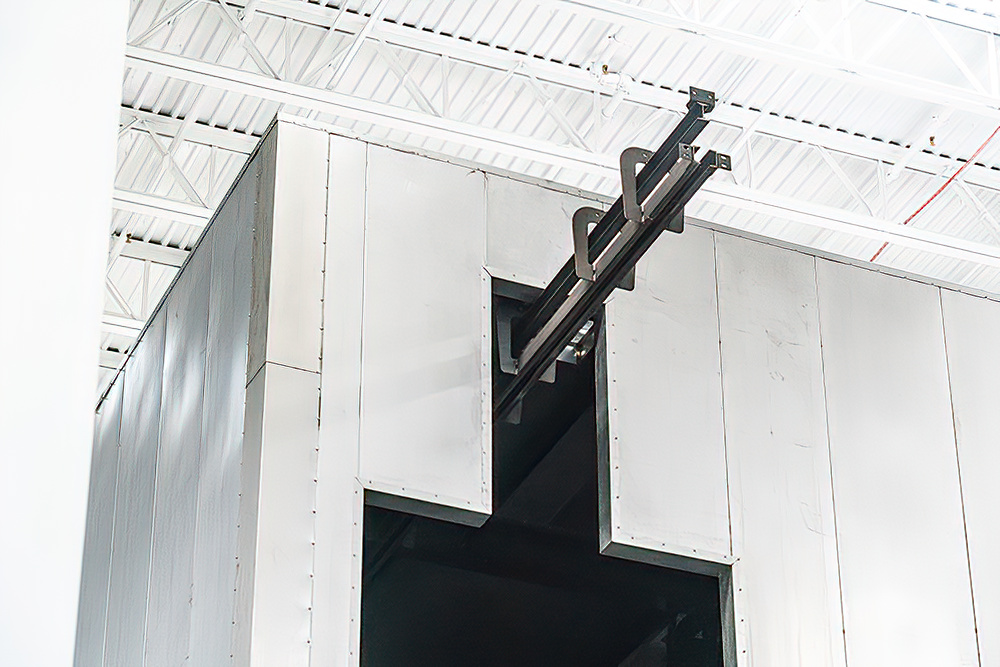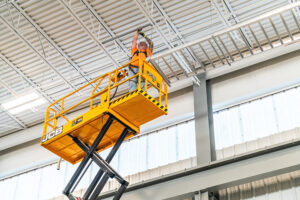Essential Techniques for Stainless Sheet Metal Fabrication
Stainless steel fabrication is a versatile process, and material, widely used across various industries. Its unique properties make it a preferred choice for many applications, and for JDI Industrial it’s a common staple material and process for our manufacturing clients in the food and beverage industry.
One such application is stainless sheet metal fabrication. This process involves cutting, forming, and assembling stainless steel sheets into custom products.
Understanding the essential techniques for stainless sheet metal fabrication is crucial. It helps ensure the quality, durability, and functionality of the final product.
In this article, we delve into these techniques. We’ll explore the properties of stainless steel, the fabrication process, and the role of cutting-edge machinery.
Whether you’re a professional in the field, a DIY enthusiast, or a business seeking custom stainless fabrication services, this guide is for you. Let’s dive in and uncover the intricacies of stainless steel sheet metal fabrication.
 Understanding Stainless Steel and Its Fabrication
Understanding Stainless Steel and Its Fabrication
Stainless steel is a unique alloy. It’s a blend of iron, carbon, and at least 10.5% chromium. This composition gives it its distinct properties.
It’s known for its corrosion resistance. This makes it ideal for environments where durability is key.
Stainless steel also has a high strength-to-weight ratio. This makes it suitable for heavy-duty applications.
It’s also aesthetically pleasing. Its shiny surface adds a modern touch to finished products.
Understanding these properties is the first step in stainless steel fabrication. It helps in selecting the right grade for each project.
Properties and Grades of Stainless Steel
There are several grades of stainless steel. Each has its unique properties and uses.
The most common is the 304 grade. It’s known for its excellent corrosion resistance and formability.
The 316 grade is another popular choice. It has added molybdenum for greater corrosion resistance.
For high-temperature applications, the 321 grade is ideal. It withstands heat better than other grades.
The 430 grade is a cost-effective option. It’s less resistant to corrosion but is highly formable.
Understanding these grades helps in selecting the right one for each fabrication project.
The Stainless Steel Fabrication Process Overview
The stainless steel fabrication process is multi-faceted. It involves several steps.
First is the design phase. Here, the product’s specifications are outlined. This includes dimensions, shape, and functionality.
Next is the cutting phase. The stainless steel sheet is cut into the desired shape. This is done using various techniques.
Then comes the forming phase. The cut pieces are bent or rolled into the required form.
The pieces are then assembled. This is done through welding or using fasteners.
Finally, the product is finished. This involves polishing or brushing to enhance its aesthetic appeal.
Cutting Techniques for Stainless Steel Sheets
Cutting is a crucial step in stainless steel fabrication. It shapes the metal into the desired form.
There are several techniques for cutting stainless steel sheets. Each has its unique benefits.
Laser cutting, waterjet cutting, and plasma cutting are the most common. They offer precision and efficiency.
Choosing the right cutting technique depends on the project’s requirements. Factors like thickness, complexity, and budget play a role.
Laser Cutting
Laser cutting is a popular technique. It uses a high-powered laser to cut through the metal.
This method offers high precision. It can cut intricate shapes with ease.
However, it’s not ideal for very thick sheets. The heat generated can warp the metal.
Waterjet Cutting
Waterjet cutting is another option. It uses a high-pressure stream of water.
This method is great for thick sheets. It doesn’t generate heat, so there’s no risk of warping.
But it’s slower than laser cutting. It also requires more cleanup.
Plasma Cutting
Plasma cutting is ideal for large-scale projects. It uses a plasma torch to cut through the metal.
This method is fast and efficient. It can handle thick sheets with ease.
However, it’s less precise than laser or waterjet cutting. It’s best for projects where speed is more important than precision.
Forming and Shaping Stainless Steel
After cutting, the next step is forming. This shapes the stainless steel into the desired form.
There are several methods for forming stainless steel. The choice depends on the project’s requirements.
Bending, rolling, stamping, and punching are common techniques. Each has its unique benefits and applications.
Bending and Rolling
Bending is a simple and effective method. It uses a press brake to bend the metal at specific points.
Rolling, on the other hand, is used for creating curves. It uses a set of rolls to bend the metal.
Both methods are versatile. They can create a wide range of shapes and forms.
Stamping and Punching
Stamping and punching are used for creating patterns and holes. They use a die to imprint or cut out the desired shape. Stamping is great for creating intricate patterns. It’s often used in decorative applications. Punching, meanwhile, is used for creating holes. It’s a quick and efficient method for mass production.
Welding and Joining Techniques
Once the stainless steel is formed, it’s time for joining. This is where welding comes in. Welding is a crucial part of stainless steel fabrication. It joins separate pieces into a single unit. There are several welding techniques. The choice depends on the project’s needs and the welder’s skill. TIG and MIG welding are two common methods. Each has its unique benefits and drawbacks.
TIG Welding
TIG welding stands for Tungsten Inert Gas welding. It’s known for its precision and quality. This method uses a tungsten electrode. It creates a clean and strong weld. However, TIG welding requires a skilled operator. It’s slower than other methods but offers superior results.
MIG Welding
MIG welding, or Metal Inert Gas welding, is another popular method. It’s faster and easier than TIG welding. MIG welding uses a consumable wire electrode. It’s great for thicker stainless steel sheets. Despite its speed, MIG welding may not be as precise as TIG welding. It’s a trade-off between speed and precision.
Finishing Techniques for Aesthetic and Durability
After welding, the stainless steel fabrication needs finishing. This step enhances both the look and durability of the product. Finishing techniques vary. They depend on the desired appearance and the product’s intended use. Common methods include polishing, brushing, and bead blasting. Each method has its unique benefits. Choosing the right finishing technique is crucial. It can significantly impact the product’s lifespan and aesthetic appeal.
 Polishing and Brushing
Polishing and Brushing
Polishing gives stainless steel a shiny, mirror-like finish. It’s ideal for decorative pieces or where cleanliness is vital. Brushing, on the other hand, creates a satin finish. It’s excellent for hiding fingerprints and light scratches. Both methods enhance the corrosion resistance of stainless steel. They provide a protective layer on the surface.
Bead Blasting
Bead blasting is another finishing technique. It creates a uniform matte surface on the stainless steel. This method uses fine glass beads at high pressure. It removes surface defects and provides a clean, smooth finish. Bead blasting is ideal for large parts or when a non-reflective surface is desired. It’s a popular choice in the automotive and aerospace industries.
Ensuring Quality in Stainless Steel Fabrication
Quality is paramount in stainless steel fabrication. It ensures the final product meets the required standards and specifications. Quality control measures are implemented at every stage. From material selection to the final inspection, nothing is left to chance. These measures include visual inspections, dimensional checks, and non-destructive testing. They ensure the product is free from defects and inconsistencies.
Adherence to quality control measures guarantees customer satisfaction. It also minimizes wastage and rework, saving time and resources. Quality control is not just about the final product. It also involves maintaining the fabrication equipment and training the workforce.
Quality Control Measures
Visual inspections are the most common quality control measure. They involve checking the product for visible defects and inconsistencies. Dimensional checks ensure the product meets the specified measurements. They involve using measuring tools like calipers and micrometers.
Non-destructive testing includes methods like ultrasonic testing and radiographic testing. These methods detect internal defects without damaging the product.
Certifications and Standards
Certifications and standards are crucial in stainless steel fabrication. They demonstrate a fabricator’s commitment to quality and safety. Common certifications include AWS D1.1 and ASME B31.1 certifications. These certifications assure customers of the fabricator’s ability to deliver quality products.
Adherence to standards like ASTM and ANSI is also essential. These standards provide guidelines on material selection, fabrication processes, and testing methods.
Conclusion: The Importance of Expertise in Stainless Steel Fabrication
Stainless steel fabrication is a complex process. It requires a high level of expertise and precision to produce quality products. Choosing a fabricator with the right skills and experience is crucial. They can navigate the challenges of the process and deliver the desired results.
In conclusion, understanding the essential techniques for stainless steel fabrication is key to JDI Industrial’s fabricators. We ensure the success of any stainless fabrication project, just call us today to find out how we can do it for your project.




